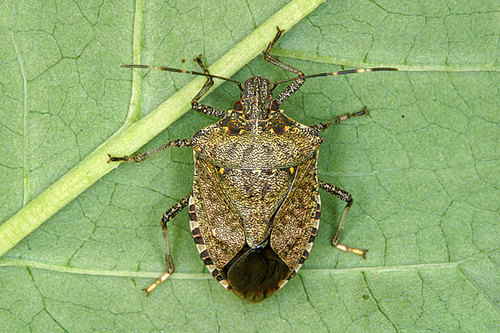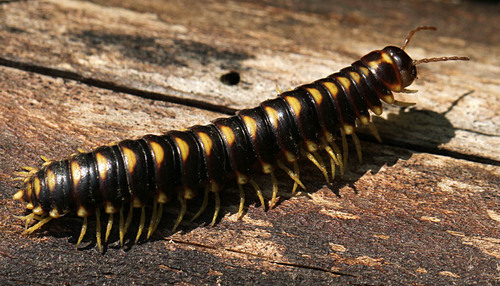The litany of pests that typically infest food plants is lengthy. However, while the focus is rightly centered on ants, cockroaches, rodents, flies, and stored product moths and beetles, there are other pests that can wreak havoc inside these sensitive environments. Due to their infrequent appearance, you may not have much experience recognizing and determining how to deal with these so-called occasional invaders and overwintering insects. Let’s break down some of the most commonly encountered culprits so you can stay ahead of them.
Asian Lady Beetle

The multicolored Asian lady beetle, Harmonia axyridis, is very similar in appearance to our native lady beetles, which are often referred to as ladybugs, but has become a significant structural pest over the past two decades. This species was intentionally introduced in the United States in the late 1970s to combat crop pests, but has since spread throughout the country.
Through much of the year, multicolored Asian lady beetles have little interaction with human dwellings, but when temperatures drop in the fall they can aggregate in great numbers on the exterior of buildings, including food plants. Southand west-facing walls accumulate heat, and over the course of a few weeks, hundreds to thousands of these beetles can gather. Not satisfied with the temporary warmth, the multi-colored Asian lady beetle looks for vulnerable exterior points that can be exploited. From there, they just need a tiny opening to get inside and overwinter in their new, warm confines. Areas around windows, doors, and weep holes and underneath flashing are especially susceptible to overwintering insects.
Once inside, the beetles pose a multitude of potential problems. Multicolored Asian lady beetles respond to threats by “bleeding” through their leg joints, and the excreted hemolymph can stain and mar surfaces—which is clearly unacceptable in food-handling facilities. Additionally, those that have penetrated the structure eventually have to get out somehow, but when they attempt to go back outside in the spring, they often are unable to do so and will end up going the wrong direction toward warmth to enter interior spaces. When large numbers of these beetles overwinter indoors, it’s likely that many of them will die in wall voids which invites secondary pests, such as dermestid beetles and cockroaches, to come and feed on their bodies.
Multi-colored Asian lady beetles can be twice as large as non-pest native lady beetles, reaching up to 10 mm in length. Color and number of spots are not reliable identifying features as they are both subject to variation; instead, look for two white ovals just behind the head.
Brown Marmorated Stink Bug

The phrase “stink bug” is probably enough to sound some alarms, and it isn’t a misnomer; these bugs emit a foul odor when threatened. The brown marmorated stink bug, Halyomorpha halys, is an invasive species first discovered in Pennsylvania in 2001 that has rapidly become an agricultural threat and one of the most troublesome overwintering pests across the U.S. Often shortened to BMSB, this species shares similar overwintering behavior with the multicolored Asian lady beetle.
Attracted to the warmth on the exterior of buildings, these pests gather together in the fall when temperatures begin to drop and probe the exterior of the building for a way inside You are most likely to see these true bugs in the fall, when they first make it inside, and in the spring, when they rouse from their sleep-like, inactive state and groggily move about. BMSB do not bite humans or transmit disease, but their presence is unacceptable, as is their offensive odor.
Adult brown marmorated stink bugs have a mottled dark-brown appearance, are about the size of a dime, and are shaped like a shield.
Millipedes

Millipedes are typically unseen arthropods that live in and among their food source, which is damp and decaying organic matter. Millipedes are often confused with centipedes, which are predacious. Millipedes have two pairs of legs per body segment compared to one pair per segment for centipedes.
Though the number of legs is often exaggerated (they do not have 1,000 legs), they can have more than 90 pairs. When millipedes scavenge for decaying plants and damp wood, they go unnoticed and are actually beneficial, helping cycle nutrients through the environment. Sometimes, though, millipedes will migrate en masse, bringing them to exterior walls, or inside your plant. Millipede
migration seasonality is unpredictable, though it occurs more often in the fall than spring or summer, and a migration is difficult to manage after it has started. The best offense against migrating millipedes is a good defense. Clear any mulch and vegetation well away from the structure, keep grass mown short, and restrict any watering or landscaping work to the early morning.
Prevent Occasional Pests
The key to keeping overwintering and occasional invaders out of a food plant is to be proactive and address any structural vulnerabilities that may exist. Remember, the only way these arthropods can become pests is by making it into your plant. If they are properly excluded, you will not have to worry about them. Multi-colored Asian lady beetles, brown marmorated stink bugs, boxelder bugs, and other flying insects begin to seek out warm surfaces in late summer through fall, as temperatures decline and days shorten.
While it’s not practical to prevent exterior walls from gathering sunlight, you can take efforts to make your facility less exploitable. Good pest-proofing starts with a very thorough inspection to locate and identify areas that may be vulnerable and need to be addressed. Look for any cracks or crevices around the foundation, and seal them to keep out crawling insects. It’s also recommended that any mulch and vegetation be removed from the perimeter of your facility. Not only does plant matter provide habitat for all kinds of unwanted pests, it also retains moisture and can invite other problems.
You also can remove a major point of entry by sealing all windows with caulk, both inside and out, and affixing weatherstripping to them. All doors should have tightly fitting sweeps installed and, of course, all doors and windows kept tightly closed as much as possible. Vents on the exterior of the structure should be fitted with tight screens, and weep holes should be plugged. Flying insects are a threat to penetrate from ground level up to several stories high, so don’t shortchange yourself by neglecting any entry points. If you are pressed for time or resources, focus your efforts on the west- and south-facing walls.
Preventing overwintering and invading pests from entering your facility is your best bet because once they have found their way inside, they can be hard to reach. These pests readily exploit wall voids, drop ceilings, and other hidden places. It’s important to begin this process in the spring and summer so you are prepared before pests begin seeking a warm, wintering locale in the fall—and so you don’t inadvertently seal in any insects that have already taken shelter inside. If you are finding some of these invaders in your facility, or would like help in pestproofing your plant, contact your pest management professional. Now is the time to develop a plan to seal out these pests before they return next autumn.
This article is very helpful, this help me a lot <a href="http://nwapestcontrol.com/">lot to prevent pest</a> in my home


